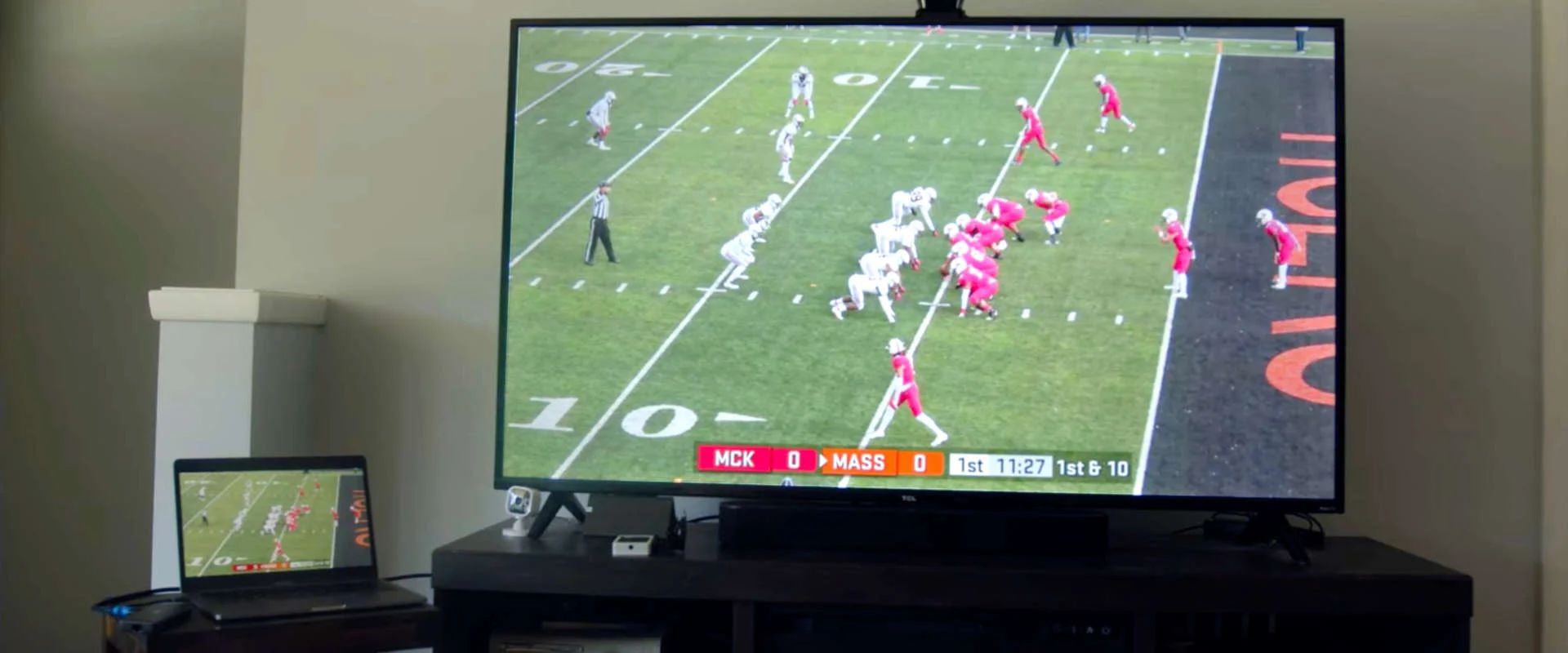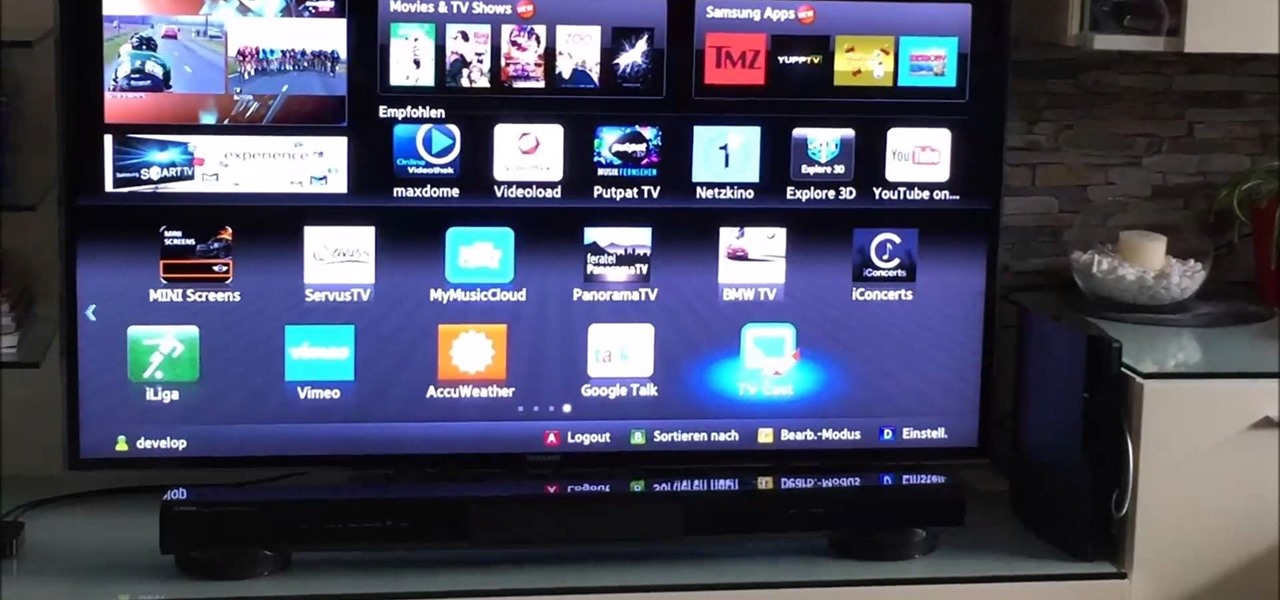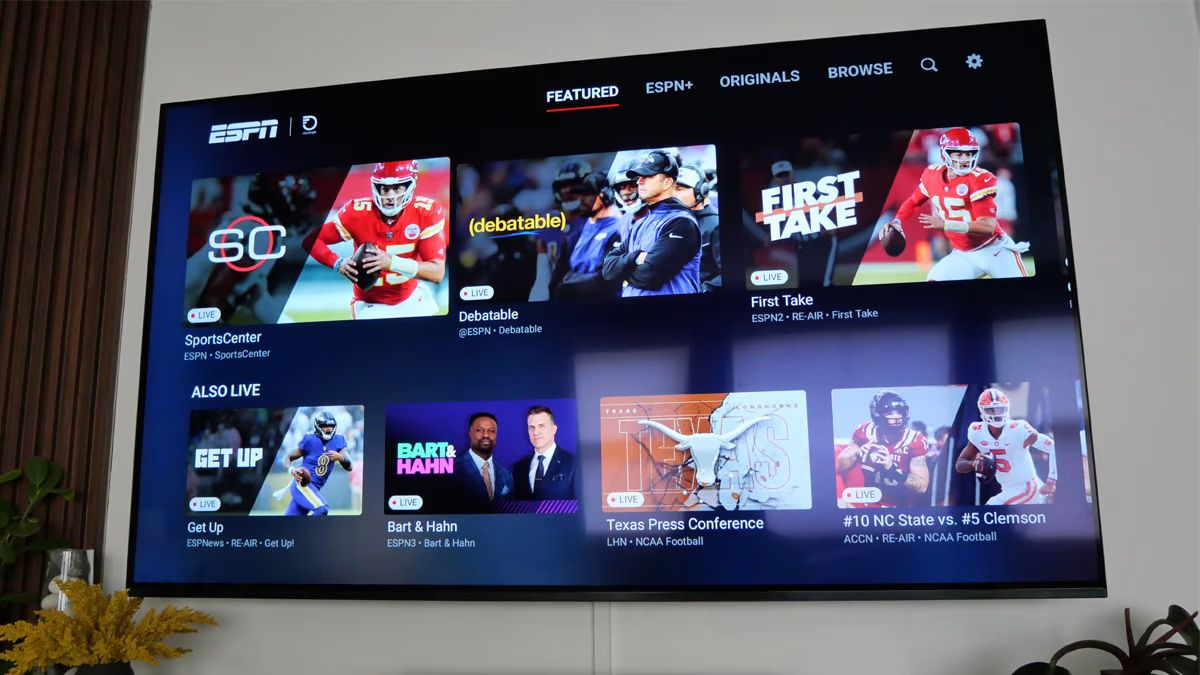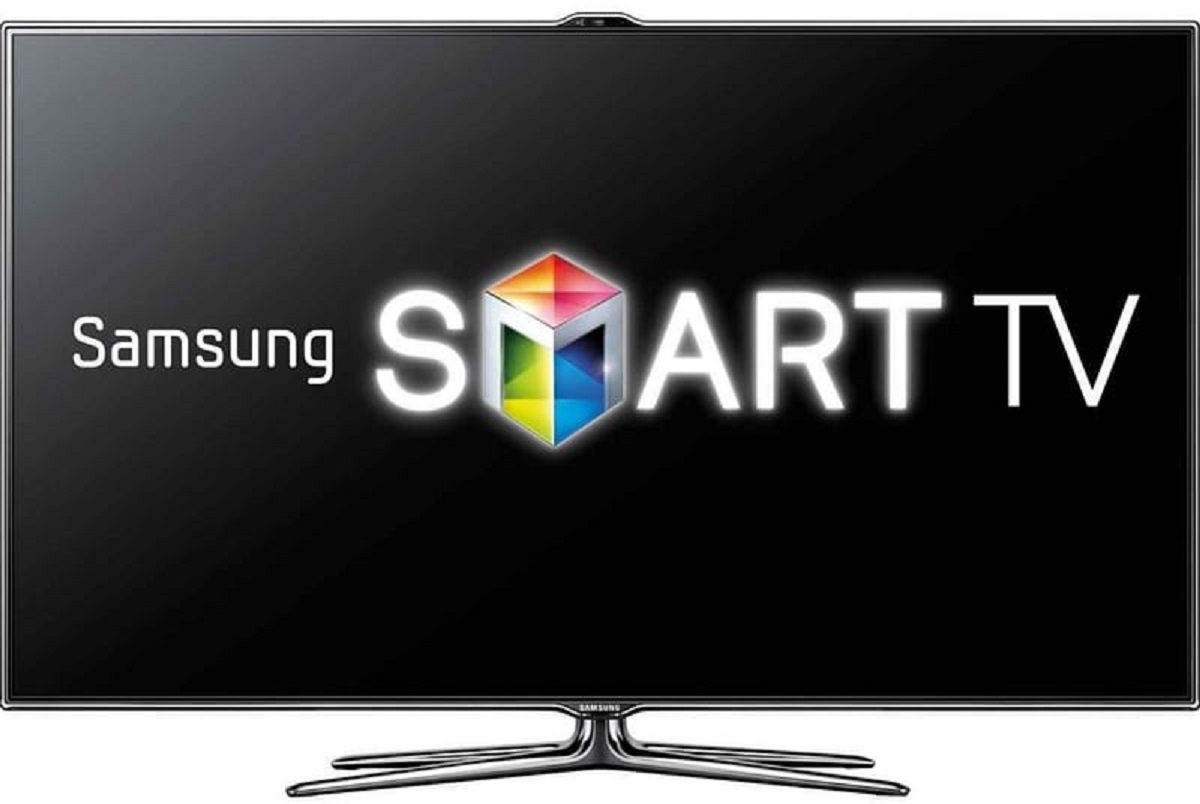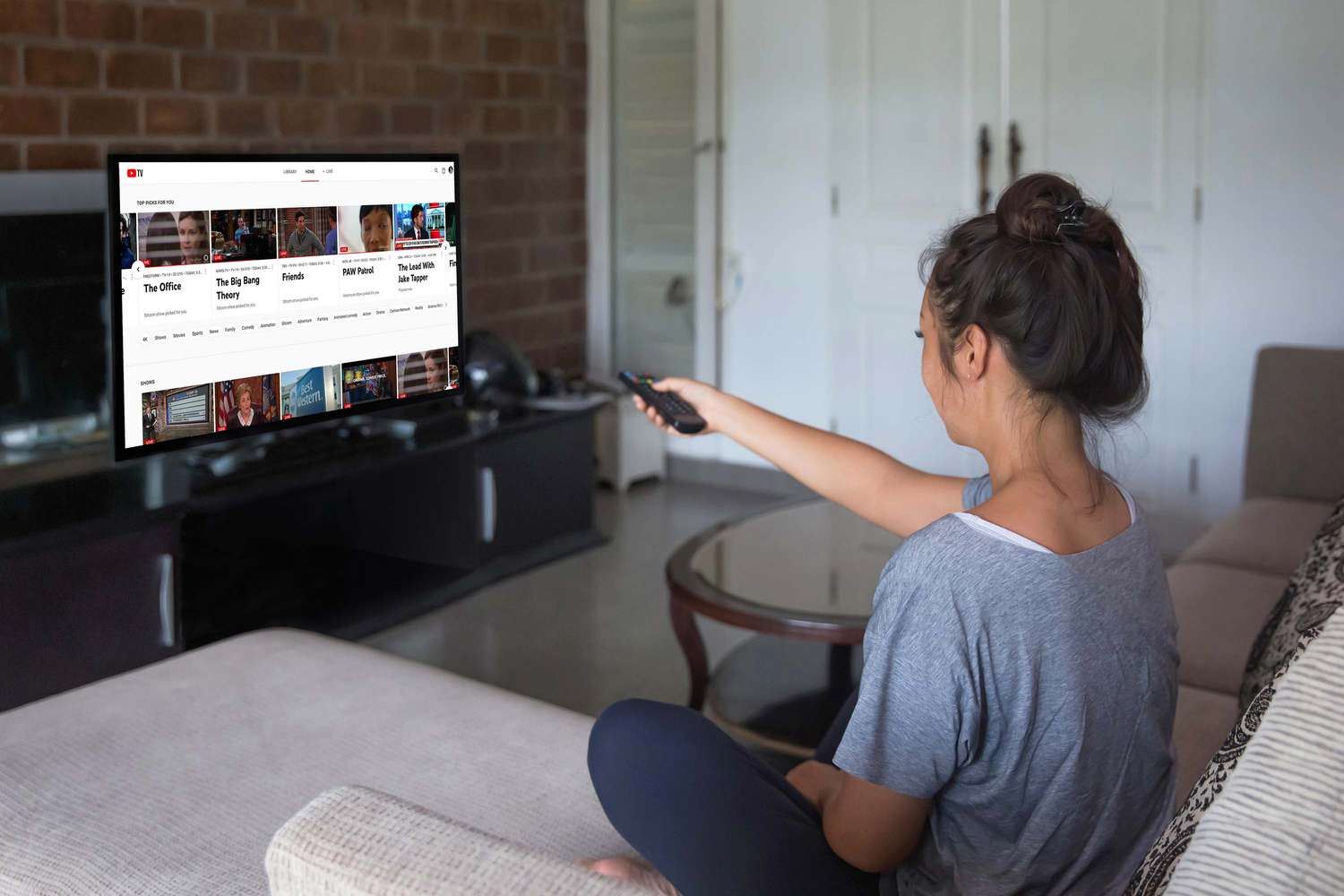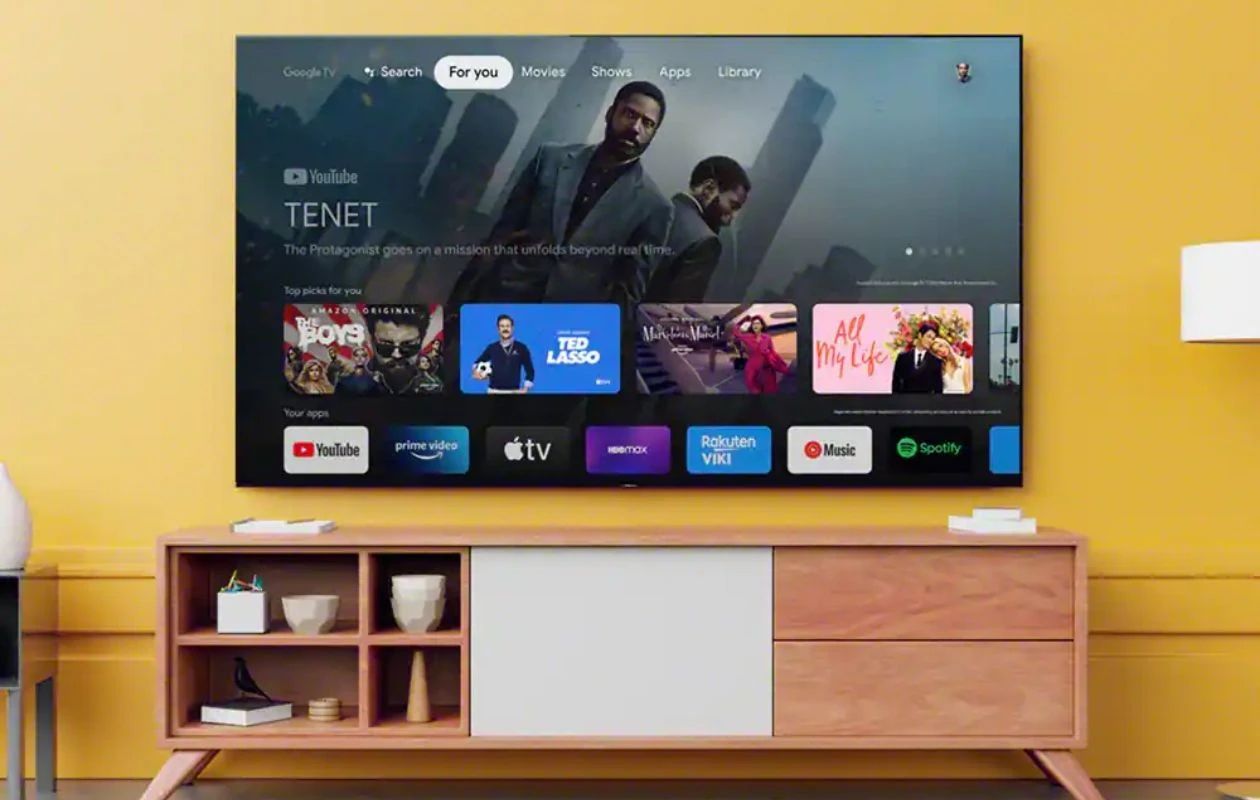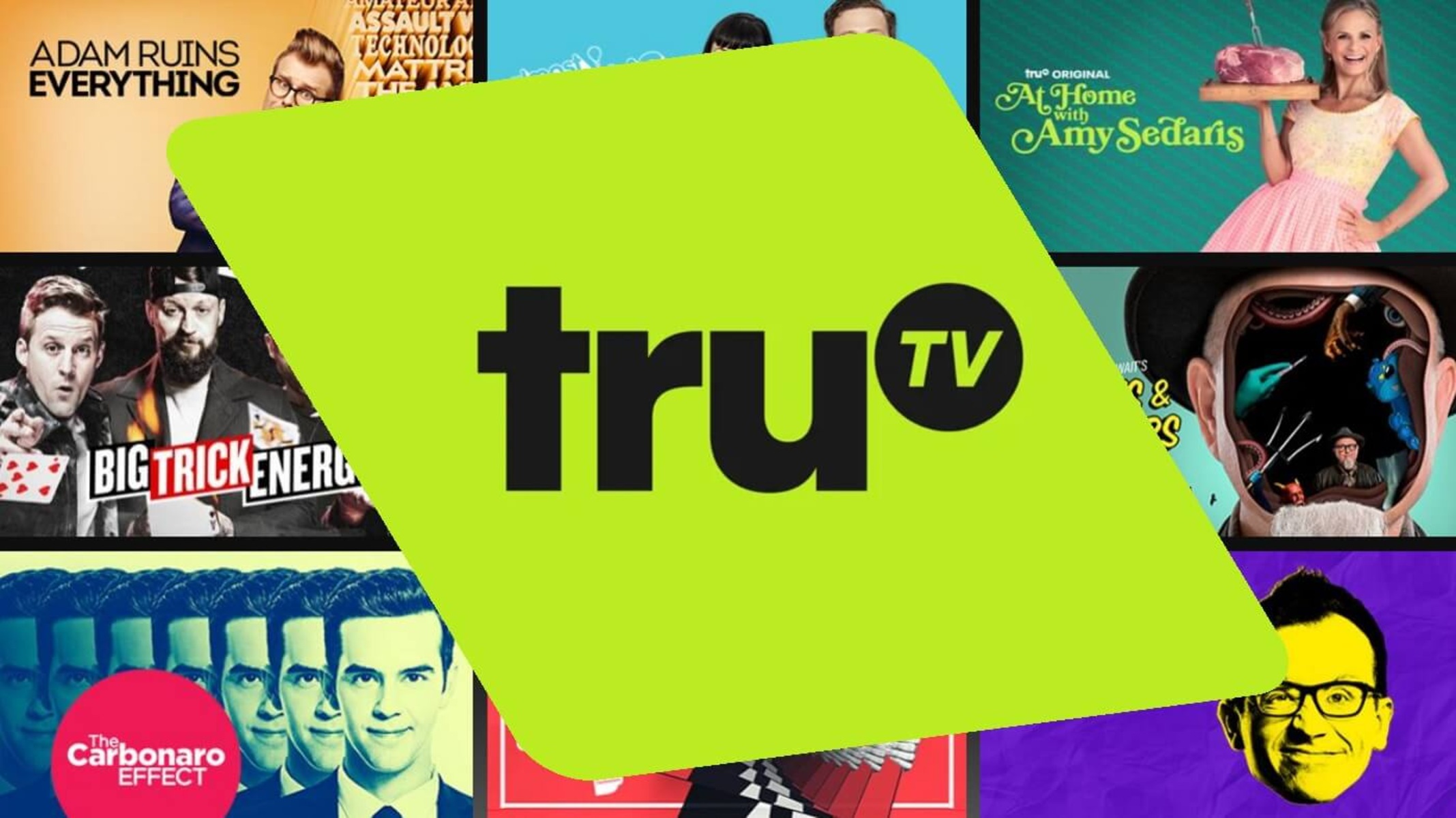Introduction
A Smart TV is a television with built-in internet connectivity and the ability to access a wide range of online content. Gone are the days when TVs were simply used for watching traditional cable or satellite channels. With the advent of Smart TVs, viewers can now access live TV through various mediums, offering a more personalized and interactive entertainment experience.
Smart TVs have revolutionized the way we watch television by providing access to a plethora of streaming services, apps, and live TV options. Whether you want to catch up on the latest news, watch sports events in real-time, or enjoy your favorite TV shows as they air, Smart TVs provide a convenient and versatile platform.
In this article, we will explore the different methods that allow you to watch live TV on a Smart TV. We will cover traditional cable or satellite subscriptions, over-the-air antennas, streaming services, IPTV services, live TV apps, and screen mirroring from other devices. Each method has its own distinct advantages and limitations, so it’s important to understand the options available to you.
It’s worth noting that the availability of these methods may vary depending on your location and the make and model of your Smart TV. Some Smart TVs have built-in tuners that support over-the-air antennas, while others rely solely on internet-based streaming services. Regardless, most Smart TVs offer multiple options to access live TV, giving you the flexibility to choose what suits your preferences.
So, if you’re ready to dive into the world of live TV on your Smart TV, let’s explore the various methods that will allow you to enjoy your favorite shows, news, and live events right from the comfort of your living room.
What is a Smart TV?
A Smart TV is a television that combines traditional television features with internet connectivity and interactive capabilities. Unlike conventional TVs, which are limited to receiving and displaying broadcast signals, Smart TVs enable users to access a wide range of online content, stream media, download apps, and connect to other devices.
At its core, a Smart TV is essentially a television with integrated internet capabilities. It connects to your home Wi-Fi network, allowing you to access online services and content directly from your TV without the need for external devices. This means you can watch streaming services like Netflix, Hulu, or Amazon Prime Video, stream videos from YouTube, and even browse the internet from the comfort of your couch.
Smart TVs typically come equipped with a user-friendly interface, often displayed as an app store or home screen that gives you quick access to various functions and content sources. This interface allows you to navigate through different apps, switch between live TV and streaming platforms, and customize your viewing experience according to your preferences.
One of the key advantages of Smart TVs is their ability to offer personalized content recommendations based on your viewing habits. These recommendations are generated by sophisticated algorithms that analyze your previous viewing patterns and recommend shows, movies, or videos that match your interests. This personalized approach enhances the entertainment experience, helping you discover new content that you might otherwise not have come across.
Moreover, Smart TVs also offer the convenience of connecting to other devices seamlessly. Whether it’s your smartphone, tablet, or even your home computer, you can easily mirror their screens onto the TV using technologies like AirPlay or Chromecast. This allows you to enjoy the content on a larger screen or share photos and videos with friends and family.
As technology continues to advance, Smart TVs are becoming increasingly sophisticated. Some models now come with voice control features, allowing you to control your TV using natural voice commands rather than a remote control. Additionally, Smart TVs are incorporating smart home integration, enabling you to control and monitor connected devices within your home, such as thermostats, lighting, and security systems, all from the comfort of your couch.
Overall, Smart TVs have transformed the way we consume media by combining the best of traditional television with the vast possibilities of the internet and smart technology. They offer a comprehensive entertainment experience, giving you access to a wide range of content, personalized recommendations, and the convenience of connecting to other devices.
How to Access Live TV on a Smart TV
Accessing live TV on a Smart TV is easier than ever, thanks to the variety of options available. Whether you prefer traditional cable or satellite subscriptions, over-the-air antennas, streaming services, IPTV services, live TV apps, or screen mirroring from other devices, there’s a method to suit your needs and preferences.
Here are six popular methods for accessing live TV on a Smart TV:
- Traditional Cable or Satellite Subscription: If you already have a cable or satellite subscription, you can easily connect your Smart TV to a set-top box or cable/satellite receiver. This will allow you to access live TV channels in the same way you would on a traditional TV.
- Over-the-Air Antenna: Smart TVs with built-in tuners can receive over-the-air (OTA) signals from local broadcast stations. By connecting an OTA antenna to your Smart TV, you can watch local channels for free, including news, sports, and other live events.
- Streaming Services: Many popular streaming services now offer live TV packages alongside their on-demand content. Services like Hulu + Live TV, YouTube TV, and Sling TV allow you to stream live TV channels directly on your Smart TV. These services often include a variety of channels, including sports, news, entertainment, and more.
- IPTV Services: Internet Protocol Television (IPTV) services deliver live TV channels over the internet. Some Smart TVs have built-in IPTV apps, while others may require you to download an IPTV app from the app store. Subscribing to an IPTV service will give you access to a wide range of live channels from around the world.
- Live TV Apps: Many broadcasters and media companies offer dedicated apps for live TV streaming. These apps allow you to watch their live channels directly on your Smart TV. Examples include apps from major networks like ABC, NBC, CBS, and Fox. Simply download the desired app from your Smart TV’s app store and log in with your provider credentials.
- Screen Mirroring from Other Devices: If you have a smartphone, tablet, or computer, you can mirror its screen onto your Smart TV to watch live TV content. Most Smart TVs support screen mirroring technologies like AirPlay (iOS) or Chromecast (Android), making it easy to display the content from your device on the big screen.
It’s important to note that some of these methods may require additional subscriptions or purchases. Additionally, the availability of certain services and features may vary depending on the brand and model of your Smart TV. Be sure to check the specifications and capabilities of your specific Smart TV to determine which methods are compatible.
With the wide range of options available, you can now enjoy live TV on your Smart TV without being restricted to traditional cable or satellite subscriptions. Choose the method that suits your preferences and start enjoying your favorite live channels and shows on the big screen.
Traditional Cable or Satellite Subscription
One of the most straightforward methods to access live TV on a Smart TV is through a traditional cable or satellite subscription. If you already have a cable or satellite service, you can connect your Smart TV to a cable or satellite set-top box or receiver to access live TV channels.
This method allows you to enjoy a wide range of channels, including local, national, and international networks. You can watch news programs, sports events, TV shows, and more, just as you would with a conventional TV.
To set up your Smart TV with a cable or satellite subscription, follow these steps:
- Connect your cable or satellite set-top box or receiver to the HDMI input on your Smart TV. Make sure you have the appropriate HDMI cable for the connection.
- Power on your Smart TV and select the HDMI input that you connected your cable or satellite box to.
- Use the remote control provided with your cable or satellite service to change channels, navigate menus, and access other TV features.
By using your cable or satellite service with a Smart TV, you can utilize the advanced features and functionalities of the Smart TV interface while still enjoying the live TV channels provided by your subscription. This includes features such as personalized content recommendations, access to streaming apps, and the ability to connect to other devices.
It’s important to note that you will need a valid cable or satellite subscription and a cable or satellite box compatible with your Smart TV. Additionally, make sure that your Smart TV has the necessary inputs and connectivity options to connect to the cable or satellite box.
While accessing live TV through a traditional cable or satellite subscription offers a wide variety of channels and a familiar TV experience, it may involve additional costs and hardware requirements. Keep in mind that you will need to pay for the cable or satellite service itself, and you may also need to rent or purchase equipment from the provider.
If you already have a cable or satellite subscription, connecting it to your Smart TV can be a convenient option for accessing live TV channels. However, if you prefer a more flexible and internet-based approach to live TV, there are other methods available that we will explore in the following sections.
Over-the-Air Antenna
Another method to access live TV on a Smart TV is by using an over-the-air (OTA) antenna. Over-the-air antennas allow you to receive free, high-definition broadcast signals from local television stations. This means you can access local channels that broadcast news, sports, and other live events without the need for a cable or satellite subscription.
To set up an over-the-air antenna on your Smart TV, follow these steps:
- Check if your Smart TV has a built-in TV tuner. This will allow you to directly connect the OTA antenna to your TV. Most Smart TVs sold in recent years will have this feature, but older models may require an external TV tuner.
- Position your OTA antenna for optimal signal reception. Typically, placing the antenna near a window or higher elevation can improve signal quality.
- Connect the OTA antenna to the coaxial input on your Smart TV. If necessary, use a coaxial cable to connect the antenna to the TV’s antenna input or an external TV tuner.
- Perform a channel scan on your Smart TV. This will search for available channels and tune in to those that can be received through the antenna. The process may take a few minutes, depending on the number of channels available in your area.
- Once the channel scan is complete, you can use your Smart TV’s remote control or on-screen interface to navigate and watch the available live TV channels.
By using an over-the-air antenna, you can access local channels that broadcast news, sports, and other live events for free. This is especially useful for those who want to stay up to date with local news or enjoy popular network programs without relying on a paid subscription service.
It’s important to note that the number and quality of available channels may vary depending on your location and the strength of the TV signals in your area. Some larger metropolitan areas may offer a wider selection of channels, while rural areas may have fewer options. Additionally, the range of the OTA antenna may limit the number of channels you can receive.
Over-the-air antenna access on a Smart TV provides a cost-effective solution for accessing local broadcasts and enjoying live TV content without the need for a cable or satellite subscription. It allows you to supplement your streaming options with live channels from major broadcast networks.
However, keep in mind that with an OTA antenna, you will not have access to cable-exclusive channels, premium networks, or on-demand content. If you want a wider range of channels and additional features, you can explore other methods such as streaming services, IPTV services, or live TV apps, which we will cover in the following sections.
Streaming Services
Streaming services have gained immense popularity in recent years, offering an excellent alternative to traditional cable or satellite subscriptions. These services allow you to access live TV channels, on-demand content, and exclusive programming through the internet, making them a convenient choice for Smart TV users.
There are several popular streaming services that offer live TV packages alongside their on-demand content. Some of the most well-known options include Hulu + Live TV, YouTube TV, Sling TV, and PlayStation Vue. These services provide access to a wide range of live TV channels, including news, sports, entertainment, and more.
To access live TV through streaming services on your Smart TV, follow these general steps:
- Check if the streaming service you’re interested in is compatible with your Smart TV. Most Smart TVs support common streaming apps, but it’s always a good idea to verify compatibility before proceeding.
- If the streaming service is available on your Smart TV, download and install the app from the app store. If the service offers a free trial, sign up for it to test the features and channel lineup before committing to a subscription.
- Launch the streaming service app on your Smart TV and sign in with your account credentials. If you’re a new user, follow the on-screen prompts to create an account and choose a subscription plan.
- Once you’re signed in, navigate through the streaming service’s interface to browse and select the live TV channels you want to watch. Most services provide channel menus, search functions, and personalized recommendations to help you find the programs you’re interested in.
- Select the desired live TV channel, and enjoy watching your favorite shows, sports events, and other live programming right from your Smart TV.
Streaming services offer the advantage of flexibility and customization, allowing you to choose from a variety of channel packages and customize your viewing experience. Many services also provide cloud DVR functionality, enabling you to record live programs and watch them at a later time.
It’s important to note that streaming services typically require a paid subscription, with prices varying depending on the service and package you choose. Additionally, an internet connection with sufficient bandwidth is necessary for streaming live TV without interruptions or buffering issues.
Streaming services offer a convenient and versatile way to access live TV on a Smart TV. They provide a wide range of channels, on-demand content, and additional features that can enhance your entertainment experience. If you value flexibility and the ability to customize your channel lineup, streaming services are an excellent option to consider.
IPTV Services
IPTV (Internet Protocol Television) services have gained popularity as an alternative method for accessing live TV on Smart TVs. With IPTV, live TV channels are delivered over the internet through IP networks, providing a convenient and flexible way to watch your favorite programs.
To access live TV through IPTV services on your Smart TV, follow these general steps:
- Check if your Smart TV has built-in IPTV capabilities or if there is an IPTV app available in the app store. Some Smart TVs come pre-installed with popular IPTV apps, while others may require you to download them from the app store.
- If necessary, download and install the preferred IPTV app on your Smart TV.
- Launch the IPTV app and sign in with your IPTV service provider’s credentials. If you don’t have an IPTV service subscription, you can usually sign up for one within the app.
- Once you’re signed in, browse through the available channel list provided by the IPTV service. These services often offer a wide range of international and specialty channels in addition to the local and mainstream ones.
- Select the live TV channel you want to watch, and start enjoying your favorite shows, sports events, and live programming.
IPTV services provide an extensive lineup of live TV channels, giving you access to a wide range of content from around the world. This makes IPTV a popular choice for users who want to watch international channels, niche programming, or regional content that might not be available through traditional cable or satellite providers.
One key advantage of IPTV services is the ability to access live TV on multiple devices. In addition to your Smart TV, you can usually use the same IPTV service on smartphones, tablets, and computers, allowing you to watch your favorite channels wherever you go.
It’s important to understand that IPTV services typically require a subscription, with prices varying depending on the service and package you choose. Additionally, a stable internet connection with sufficient bandwidth is essential for a smooth viewing experience without buffering or interruptions.
While IPTV services offer a vast selection of live TV channels, it’s important to research and choose a reputable and reliable service provider. There are numerous IPTV services available, and the quality and channel lineup can vary significantly. Reading reviews and comparing features can help you make an informed decision.
If you’re looking for a versatile and customizable way to access live TV on your Smart TV with a broad range of international channels, IPTV services can be an excellent option to explore.
Live TV Apps
Live TV apps offer a convenient and user-friendly way to access live TV channels directly on your Smart TV. These apps are typically provided by broadcasters or media companies, allowing you to stream their live channels and enjoy a wide range of programming right from your Smart TV.
To access live TV through apps on your Smart TV, follow these general steps:
- Check if the broadcaster or media company you’re interested in has a dedicated app available for your Smart TV. Most major networks and media companies offer apps for popular Smart TV platforms.
- If the app is available, download and install it from the app store of your Smart TV. Some apps may require you to create an account or sign in with your TV service provider credentials.
- Launch the app on your Smart TV and navigate through the interface to find the live TV section. The app will typically provide a menu or guide that allows you to browse and select the desired live TV channel.
- Select the live TV channel you want to watch, and start enjoying your favorite shows, news, sports events, and other live programming.
Live TV apps provide direct access to the channels and content offered by broadcasters or media companies, allowing you to stay connected with your favorite shows and stay up to date with live events. These apps often include features such as program guides, viewing recommendations, and the ability to set reminders for upcoming shows.
It’s worth noting that some live TV apps may require a TV service provider subscription to authenticate your access to live streaming content. This means you will need to provide your credentials from a cable, satellite, or IPTV service to unlock the full range of channel options. However, many apps also offer a limited selection of free-to-view channels that can be enjoyed without a subscription.
Live TV apps are a great option for users who want to stay connected with specific networks or media companies and have direct access to their live channel offerings. Whether you want to watch major networks, sports channels, or specialty content from specific broadcasters, live TV apps can provide a tailored experience on your Smart TV.
When using live TV apps, it’s important to keep in mind that the availability of specific apps may vary depending on your location and the Smart TV platform you’re using. Some apps may be exclusive to certain regions or may only be available on specific brands of Smart TVs.
In summary, live TV apps offer a straightforward and content-focused approach to accessing live TV on a Smart TV. By downloading and using these apps, you can enjoy the live channels provided by broadcasters and media companies, keeping you connected to the programming you love.
Screen Mirroring from Other Devices
Screen mirroring is a convenient feature that allows you to display the screen of your smartphone, tablet, or computer directly on your Smart TV. By wirelessly connecting the two devices, you can mirror the content from your device’s screen onto the larger display of your Smart TV, including live TV content.
To use screen mirroring to access live TV on your Smart TV, follow these general steps:
- Ensure that both your Smart TV and the device you want to mirror are connected to the same Wi-Fi network.
- On your Smart TV, navigate to the screen mirroring or casting function. The name and location of this feature will vary depending on your TV’s brand and model. Common names for screen mirroring functions include AirPlay, Miracast, or Smart View.
- On your device, access the screen mirroring or casting feature. This can often be found in the Control Center or Settings menu, depending on your device’s operating system.
- Select your Smart TV from the list of available devices for screen mirroring.
- Once connected, the screen of your device will be mirrored on your Smart TV. Open the live TV app or streaming service on your device and play the live TV content you want to watch.
- The live TV content will now be displayed on the screen of your Smart TV, allowing you to enjoy it on a larger and more immersive display.
Screen mirroring provides a convenient way to access live TV content from various sources, including streaming services, live TV apps, or even live streams from websites. It allows you to use your smartphone or other devices as a remote control, making it easy to navigate channels, adjust settings, or control playback.
It’s worth noting that to ensure a smooth and high-quality screen mirroring experience, both your device and your Smart TV need to support the same screen mirroring technology. For example, if you have an iPhone, you can use AirPlay to mirror your screen to an Apple TV or AirPlay-enabled Smart TV. Android devices, on the other hand, often support Miracast or Google Cast for screen mirroring.
Additionally, keep in mind that screen mirroring is dependent on the capabilities and performance of your devices, as well as the strength and stability of your Wi-Fi network. If your network connection is weak or unstable, you may experience lag or buffering while mirroring live TV content.
Screen mirroring is a versatile feature that allows you to access live TV on your Smart TV using the devices you already own. Whether you want to watch live sports, stream live news, or enjoy other live TV programming, screen mirroring provides a seamless and convenient way to bring it to the big screen.
Restrictions and Limitations
While accessing live TV on a Smart TV offers numerous benefits, it’s important to be aware of the potential restrictions and limitations that may come with it. Here are some considerations to keep in mind:
Geographical Restrictions: Certain live TV channels or streaming services may have geographical restrictions, meaning they are only available in specific regions or countries. This can limit the availability of certain channels or services depending on your location. It’s important to check the regional availability of the channels and services you are interested in before subscribing or attempting to access them.
Internet Connection: Streaming live TV or using online services on your Smart TV requires a stable and reliable internet connection. Inadequate internet speeds can result in buffering, poor video quality, and interruptions during live broadcasts. Make sure you have a sufficient internet bandwidth and consider using a wired Ethernet connection for optimal performance, especially if your wireless connection is inconsistent or slow.
Subscription Costs: While some methods to access live TV on a Smart TV may be free, such as over-the-air antennas or certain live TV apps, others may require paid subscriptions. Cable or satellite subscriptions, streaming services, and IPTV services often come with monthly fees. Additionally, some premium channels and specialized content may require additional fees on top of the base subscription costs. Consider your budget and the channels/content you want to access before committing to any paid services.
Hardware and Device Compatibility: Not all Smart TVs have built-in tuners or the same capabilities for accessing live TV. It’s important to check the specifications of your specific Smart TV model to ensure it supports the methods you intend to use. Additionally, some streaming services or apps may require specific hardware requirements or may only be compatible with certain brands or models of Smart TVs. Research and verify compatibility before purchasing or subscribing to any services.
Content Availability: The availability of specific live TV channels, programs, or events may vary across different methods and services. Not all channels may be available through cable/satellite subscriptions, over-the-air antennas, or streaming services. Additionally, live sporting events, pay-per-view events, or regional broadcasts may require specific access or additional fees. Research the content availability and channel lineups of the methods and services you’re considering to ensure they meet your viewing preferences.
Quality and Stability: The quality and stability of live TV streams can vary depending on the method and service you’re using, as well as the internet connection. Some streams may be in lower resolution, and there can be occasional buffering or interruptions, especially during peak streaming times. Choosing reputable and reliable services, having a fast internet connection, and ensuring your devices are up to date can help mitigate these issues.
Understanding these restrictions and limitations will help you make informed decisions about how to access live TV on your Smart TV. Consider your viewing preferences, location, budget, and available options to choose the method that best suits your needs and provides you with the content and experience you desire.
Conclusion
The advent of Smart TVs has revolutionized the way we watch live TV, providing us with a range of options beyond traditional cable or satellite subscriptions. By utilizing the built-in internet connectivity and interactive capabilities of Smart TVs, we can access live TV channels, streaming services, IPTV services, live TV apps, and even mirror content from other devices onto our Smart TVs.
Throughout this article, we explored various methods for accessing live TV on a Smart TV. We discussed traditional cable or satellite subscriptions, over-the-air antennas, streaming services, IPTV services, live TV apps, and screen mirroring. Each method offers its own unique advantages and limitations, giving you the flexibility to choose the approach that aligns with your preferences and needs.
It’s important to consider factors such as geographical restrictions, internet connection quality, subscription costs, hardware compatibility, content availability, and viewing experience when selecting the method or combination of methods that best suit your requirements.
Whether you choose to rely on a traditional cable or satellite subscription to access a wide range of channels, opt for an over-the-air antenna for free local broadcasts, subscribe to streaming services for a more personalized experience, explore IPTV services for international content, use live TV apps from broadcasters for specific channels, or enjoy the convenience of screen mirroring from your other devices, Smart TVs offer a multitude of options to enhance your live TV viewing experience.
Remember to always validate the compatibility of specific methods, services, and Smart TV models, as well as to secure a stable and reliable internet connection to ensure smooth live TV streaming.
With the convenience and versatility of Smart TVs, you can watch live TV channels, stay up to date with news and sports events, and enjoy your favorite shows and programs, all from the comfort of your living room. The power is in your hands to customize your entertainment and make the most of your Smart TV’s capabilities.







